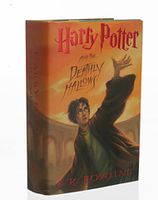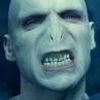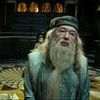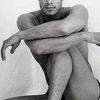So, here it is at last: The final confrontation between Harry Potter, the Boy Who Lived, the Chosen One, the “symbol of hope” for both the Wizard and Muggle worlds, and Lord Voldemort, He Who Must Not Be Named, the nefarious leader of the Death Eaters and would-be ruler of all. Good versus Evil. Love versus Hate. The Seeker versus the Dark Lord.
J. K. Rowling’s monumental, spellbinding epic, 10 years in the making, is deeply rooted in traditional literature and Hollywood sagas — from the Greek myths to Dickens and Tolkien to “Star Wars.” And true to its roots, it ends not with modernist, “Soprano”-esque equivocation, but with good old-fashioned closure: a big-screen, heart-racing, bone-chilling confrontation and an epilogue that clearly lays out people’s fates. Getting to the finish line is not seamless — the last part of “Harry Potter and the Deathly Hallows,” the seventh and final book in the series, has some lumpy passages of exposition and a couple of clunky detours — but the overall conclusion and its determination of the main characters’ story lines possess a convincing inevitability that make some of the prepublication speculation seem curiously blinkered in retrospect.
With each installment, the “Potter” series has grown increasingly dark, and this volume — a copy of which was purchased at a New York City store yesterday, though the book is embargoed for release until 12:01 a.m. on Saturday — is no exception. While Ms. Rowling’s astonishingly limber voice still moves effortlessly between Ron’s adolescent sarcasm and Harry’s growing solemnity, from youthful exuberance to more philosophical gravity, “Deathly Hallows” is, for the most part, a somber book that marks Harry’s final initiation into the complexities and sadnesses of adulthood.
From his first days at Hogwarts, the young, green-eyed boy bore the burden of his destiny as a leader, coping with the expectations and duties of his role, and in this volume he is clearly more Henry V than Prince Hal, more King Arthur than young Wart: high-spirited war games of Quidditch have given way to real war, and Harry often wishes he were not the de facto leader of the Resistance movement, shouldering terrifying responsibilities, but an ordinary teenage boy — free to romance Ginny Weasley and hang out with his friends.
Harry has already lost his parents, his godfather Sirius and his teacher Professor Dumbledore (all mentors he might have once received instruction from) and in this volume, the losses mount with unnerving speed: at least a half-dozen characters we have come to know die in these pages, and many others are wounded or tortured. Voldemort and his followers have infiltrated Hogwarts and the Ministry of Magic, creating havoc and terror in the Wizard and Muggle worlds alike, and the members of various populations — including elves, goblins and centaurs — are choosing sides.
No wonder then that Harry often seems overwhelmed with disillusionment and doubt in the final installment of this seven-volume bildungsroman. He continues to struggle to control his temper, and as he and Ron and Hermione search for the missing Horcruxes (secret magical objects in which Voldemort has stashed parts of his soul, objects that Harry must destroy if he hopes to kill the evil lord), he literally enters a dark wood, in which he must do battle not only with the Death Eaters, but also with the temptations of hubris and despair.
Harry’s weird psychic connection with Voldemort (symbolized by the lightning-bolt forehead scar he bears as a result of the Dark Lord’s attack on him as a baby) seems to have grown stronger too, giving him clues to Voldemort’s actions and whereabouts, even as it lures him ever closer to the dark side. One of the plot’s significant turning points concerns Harry’s decision on whether to continue looking for the Horcruxes — the mission assigned to him by the late Dumbledore — or to pursue the Hallows, three magical objects said to make their possessor the master of Death.
Harry’s journey will propel him forward to a final showdown with his arch enemy, and also send him backward into the past, to the house in Godric’s Hollow where his parents died, to learn about his family history and the equally mysterious history of Dumbledore’s family. At the same time, he will be forced to ponder the equation between fraternity and independence, free will and fate, and to come to terms with his own frailties and those of others. Indeed, ambiguities proliferate throughout “The Deathly Hallows”: we are made to see that kindly Dumbledore, sinister Severus Snape and perhaps even the awful Muggle cousin Dudley Dursley may be more complicated than they initially seem, that all of them, like Harry, have hidden aspects to their personalities, and that choice — more than talent or predisposition — matters most of all.
It is Ms. Rowling’s achievement in this series that she manages to make Harry both a familiar adolescent — coping with the banal frustrations of school and dating — and an epic hero, kin to everyone from the young King Arthur to Spider-Man and Luke Skywalker. This same magpie talent has enabled her to create a narrative that effortlessly mixes up allusions to Homer, Milton, Shakespeare and Kafka, with silly kid jokes about vomit-flavored candies, a narrative that fuses a plethora of genres (from the boarding-school novel to the detective story to the epic quest) into a story that could be Exhibit A in a Joseph Campbell survey of mythic archetypes.
In doing so, J. K. Rowling has created a world as fully detailed as L. Frank Baum’s Oz or J. R. R. Tolkien’s Middle Earth, a world so minutely imagined in terms of its history and rituals and rules that it qualifies as an alternate universe, which may be one reason the “Potter” books have spawned such a passionate following and such fervent exegesis. With this volume, the reader realizes that small incidents and asides in earlier installments (hidden among a huge number of red herrings) create a breadcrumb trail of clues to the plot, that Ms. Rowling has fitted together the jigsaw-puzzle pieces of this long undertaking with Dickensian ingenuity and ardor. Objects and spells from earlier books — like the invisibility cloak, Polyjuice Potion, Dumbledore’s Pensieve and Sirius’s flying motorcycle — play important roles in this volume, and characters encountered before, like the house-elf Dobby and Mr. Ollivander the wandmaker, resurface, too.
The world of Harry Potter is a place where the mundane and the marvelous, the ordinary and the surreal coexist. It’s a place where cars can fly and owls can deliver the mail, a place where paintings talk and a mirror reflects people’s innermost desires. It’s also a place utterly recognizable to readers, a place where death and the catastrophes of daily life are inevitable, and people’s lives are defined by love and loss and hope — the same way they are in our own mortal world.






 andriheidar
andriheidar
 annapala
annapala
 arnih
arnih
 swift
swift
 davidg
davidg
 davidorn
davidorn
 einaroddsson
einaroddsson
 erlaosk
erlaosk
 eyrun
eyrun
 helgahaarde
helgahaarde
 johannalfred
johannalfred
 kristinmaria
kristinmaria
 reynir
reynir
 sigruningibjorg
sigruningibjorg
 veraknuts
veraknuts




